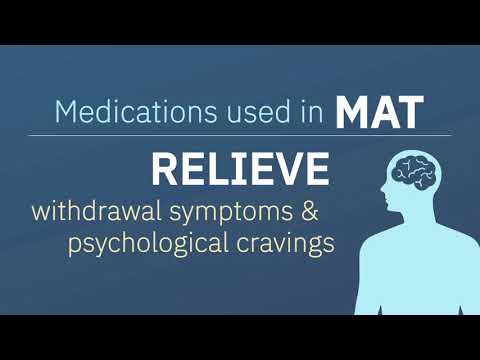What’s the Difference Between Transitional Medical Assistance and Medicaid?
Contents
- What is Transitional Medical Assistance?
- What is Medicaid?
- What are the differences between Transitional Medical Assistance and Medicaid?
- What are the eligibility requirements for Transitional Medical Assistance?
- What are the eligibility requirements for Medicaid?
- What are the benefits of Transitional Medical Assistance?
- What are the benefits of Medicaid?
- How do I apply for Transitional Medical Assistance?
- How do I apply for Medicaid?
- What happens if I am no longer eligible for Transitional Medical Assistance?
If you’re confused about the difference between Transitional Medical Assistance (TMA) and Medicaid, you’re not alone. Here’s a look at the key differences between these two government-sponsored health insurance programs.
Checkout this video:
What is Transitional Medical Assistance?
Transitional Medical Assistance (TMA) is a Medicaid program that helps low-income families transition from welfare to work. It provides health insurance coverage for a limited time after a family becomes ineligible for cash assistance from the Temporary Assistance for Needy Families (TANF) program.
To be eligible for TMA, a family must meet the following criteria:
-The family must have been receiving cash assistance from the TANF program within the past six months.
-At least one parent in the family must be working or participating in an approved work or workfare activity.
-The family’s income must be below 200 percent of the federal poverty level.
-The family’s assets must be below $5,000.
If a family meets these criteria, they will be eligible for TMA for up to 12 months after they leave the TANF program. Coverage under TMA includes all of the benefits that are available under Medicaid, such as doctor’s visits, hospital stays, prescription drugs, and more.
For more information about Transitional Medical Assistance, contact your state’s Medicaid office.
What is Medicaid?
Medicaid is a health insurance program for low-income individuals and families. It is jointly funded by the federal government and the states, and each state has its own Medicaid program. Medicaid covers a wide range of health care services, including doctor visits, hospital stays, prescription drugs, and long-term care.
There are two main types of Medicaid: regular Medicaid and Transitional Medical Assistance (TMA). Regular Medicaid is available to low-income adults, children, pregnant women, people with disabilities, and seniors. TMA is a short-term medical assistance program for low-income adults who are transitioning from one health care coverage program to another.
So what’s the difference between regular Medicaid and TMA? The main difference is that TMA provides temporary medical assistance to low-income adults who are transitioning between health care coverage programs. TMA does not provide long-term coverage like regular Medicaid does.
What are the differences between Transitional Medical Assistance and Medicaid?
Transitional Medical Assistance (TMA) is a Medicaid program that helps low-income families who are transitioning from welfare to work. TMA provides Medicaid coverage for up to 12 months for families who would otherwise lose Medicaid eligibility due to increased income from employment.
Medicaid is a health insurance program for low-income individuals and families. Medicaid covers a wide range of health care services, including doctor visits, hospital stays, prescription drugs, vision care, and more.
What are the eligibility requirements for Transitional Medical Assistance?
To be eligible for Transitional Medical Assistance (TMA), you must:
-Be currently enrolled in Medicaid
-Be ineligible for Medicaid due to increased income
-Have a dependent child under the age of 19
-Agree to cooperate with child support enforcement
What are the eligibility requirements for Medicaid?
In order to be eligible for Medicaid, an individual must meet certain financial and other criteria. To meet the financial criteria, an individual’s income must be at or below a certain level. In addition, the individual must be a U.S. citizen or legal permanent resident, and they must be a resident of the state in which they are applying for Medicaid benefits.
Other criteria that may need to be met include being pregnant, disabled, blind, or 65 years of age or older. In some cases, individuals who are enrolled in other state or federal health care programs (such as Medicare) may also be able to receive Medicaid benefits.
What are the benefits of Transitional Medical Assistance?
Transitional Medical Assistance (TMA) is a Medicaid program that helps low-income families who are transitioning from welfare to work. Families who qualify for TMA receive Medicaid coverage for up to 12 months after they leave welfare. TMA helps families make the transition to work by providing them with access to health care coverage.
Some of the benefits of TMA include:
– Access to health care coverage for up to 12 months after leaving welfare
– Coverage of doctor’s visits, prescriptions, and other necessary medical services
– peace of mind knowing that you and your family have access to quality health care
What are the benefits of Medicaid?
There are many benefits to Medicaid, including but not limited to free or low-cost health insurance prescription drug coverage, long-term care services, and mental health services. Medicaid also covers a wide range of other services such as vision and dental care.
How do I apply for Transitional Medical Assistance?
To apply for Transitional Medical Assistance (TMA), you must first be eligible for Medicaid. You can apply for Medicaid through your state’s social services office or online. Once you have applied and been found eligible for Medicaid, you will be asked if you want to enroll in TMA. If you enroll in TMA, you will be responsible for paying a monthly premium, as well as any co-pays and deductibles required by your state’s Medicaid program.
How do I apply for Medicaid?
You can apply for Medicaid through your state’s Medicaid office or online through the Healthcare.gov website. You’ll need to provide information about your income and assets, as well as your family size. Once you’ve applied, you’ll be contacted by your state’s Medicaid office to set up an interview.
What happens if I am no longer eligible for Transitional Medical Assistance?
If you are no longer eligible for TMA, your Medicaid coverage will end. You may be able to get help through the Marketplace. You can learn more about your health insurance options through the Marketplace by visiting healthcare.gov.







